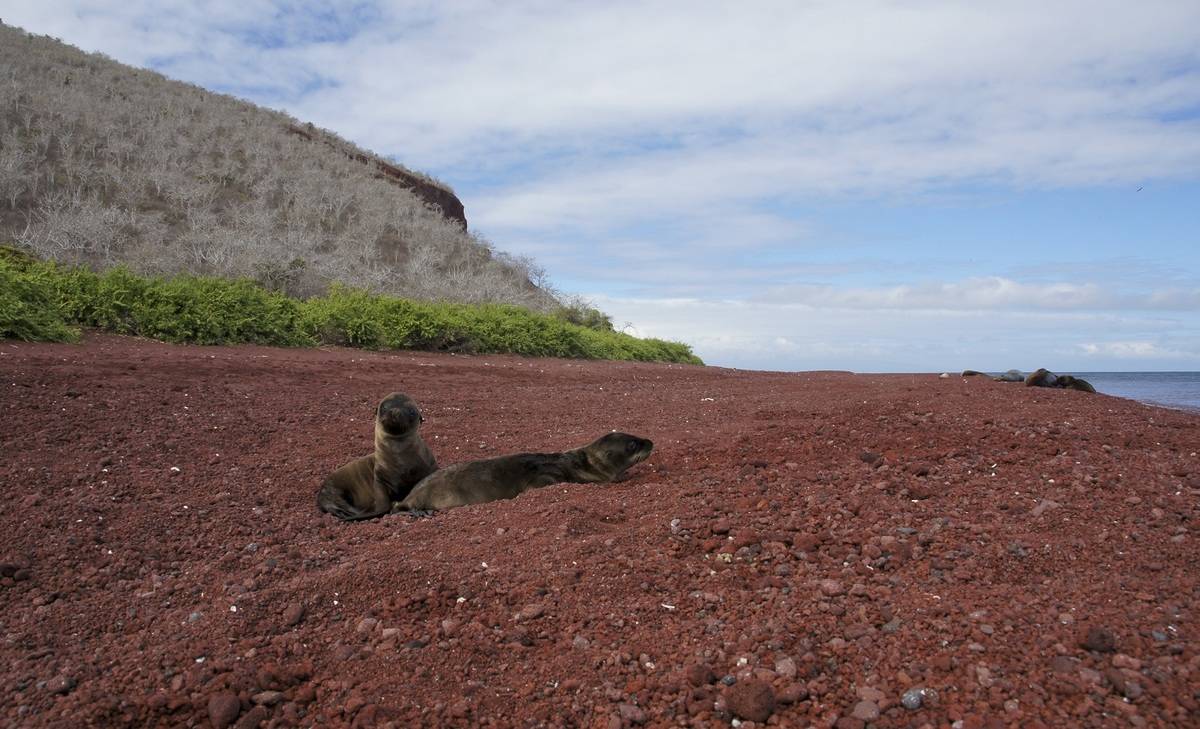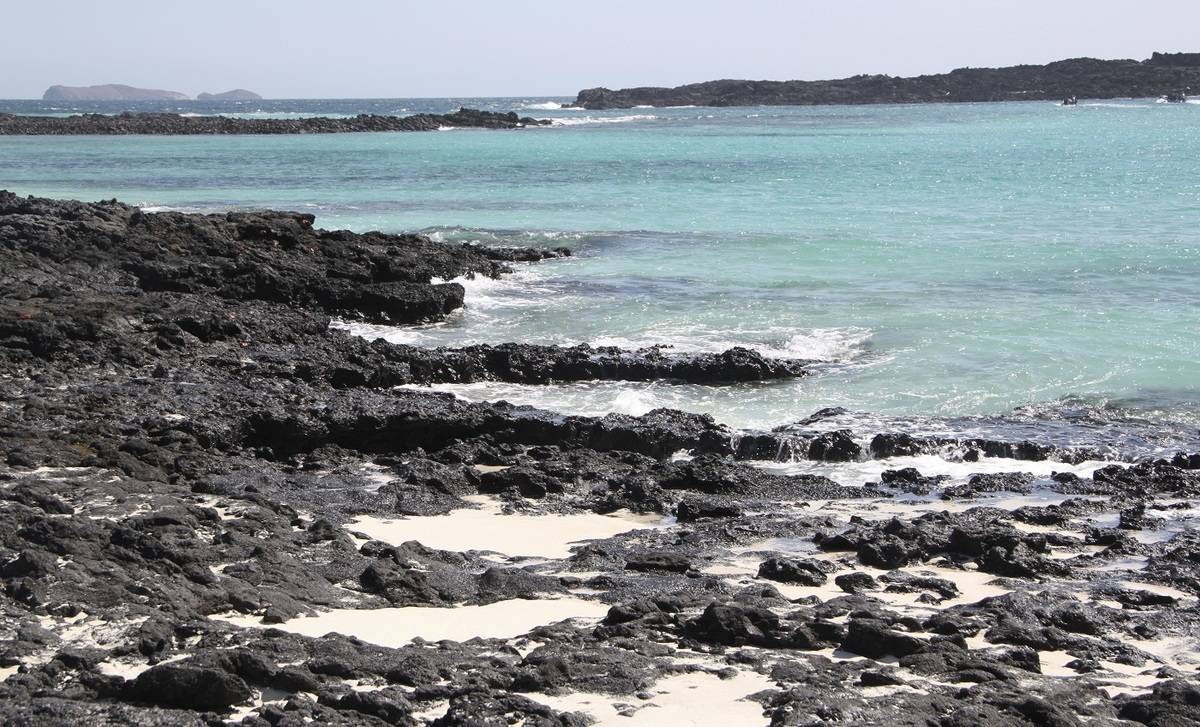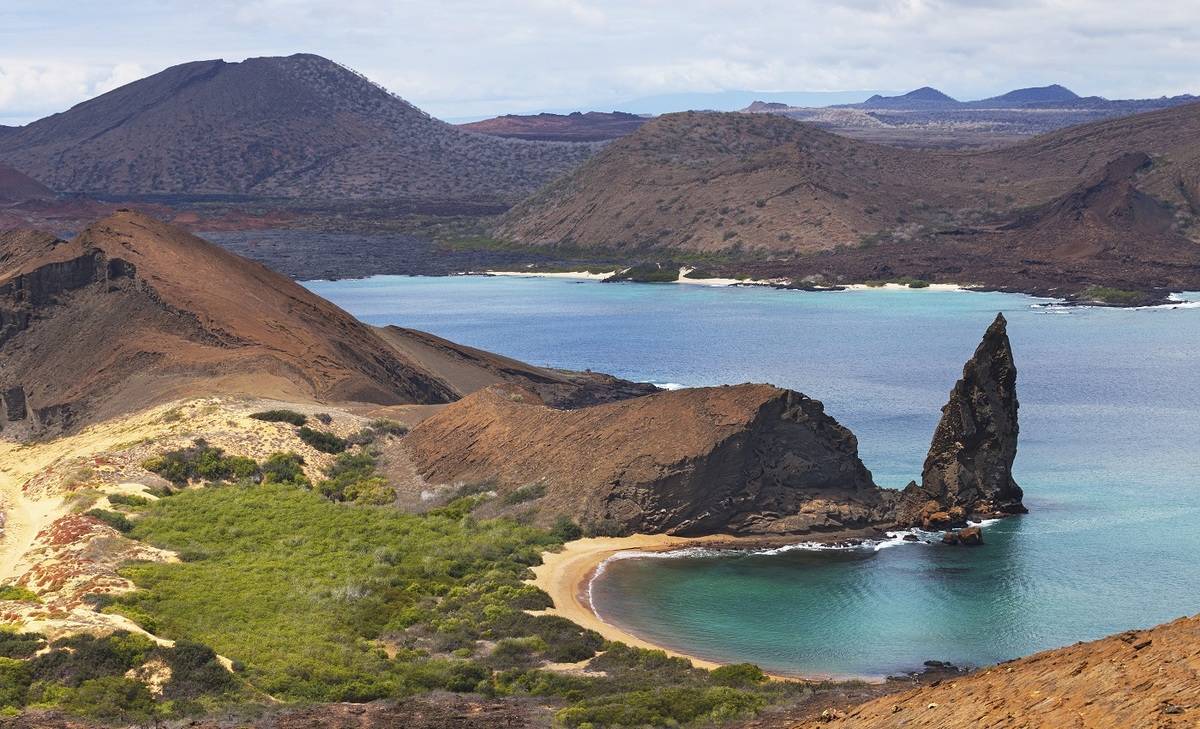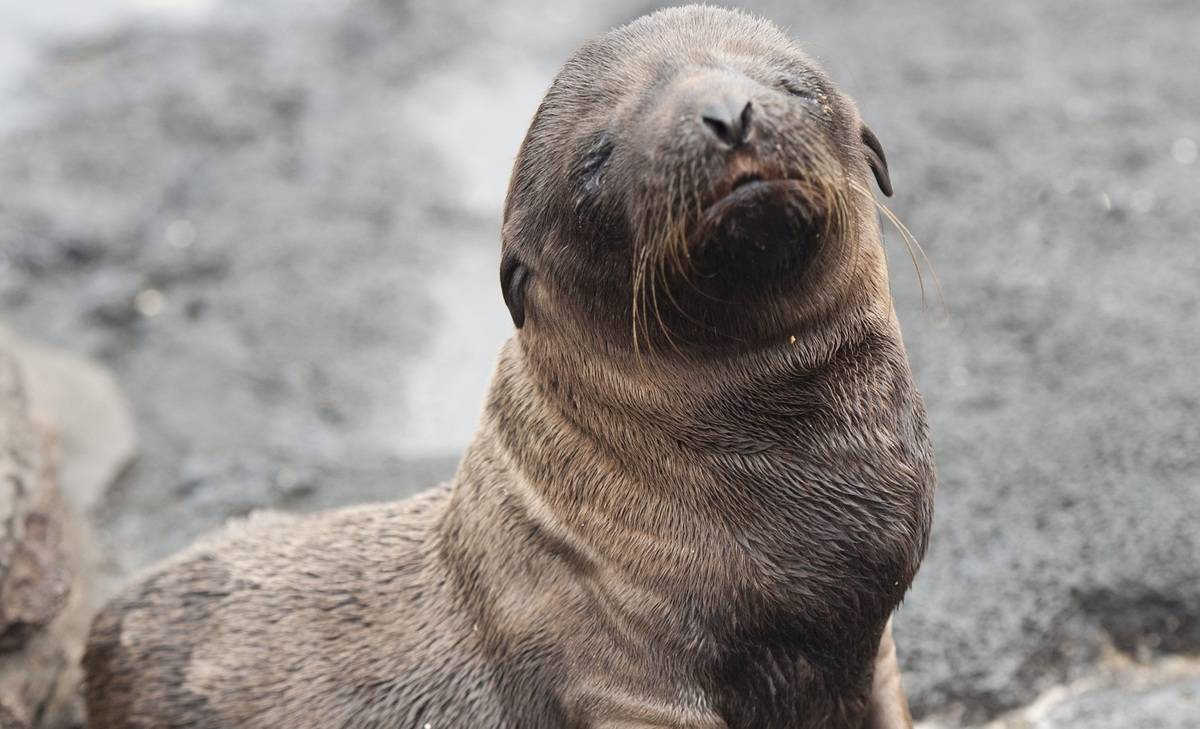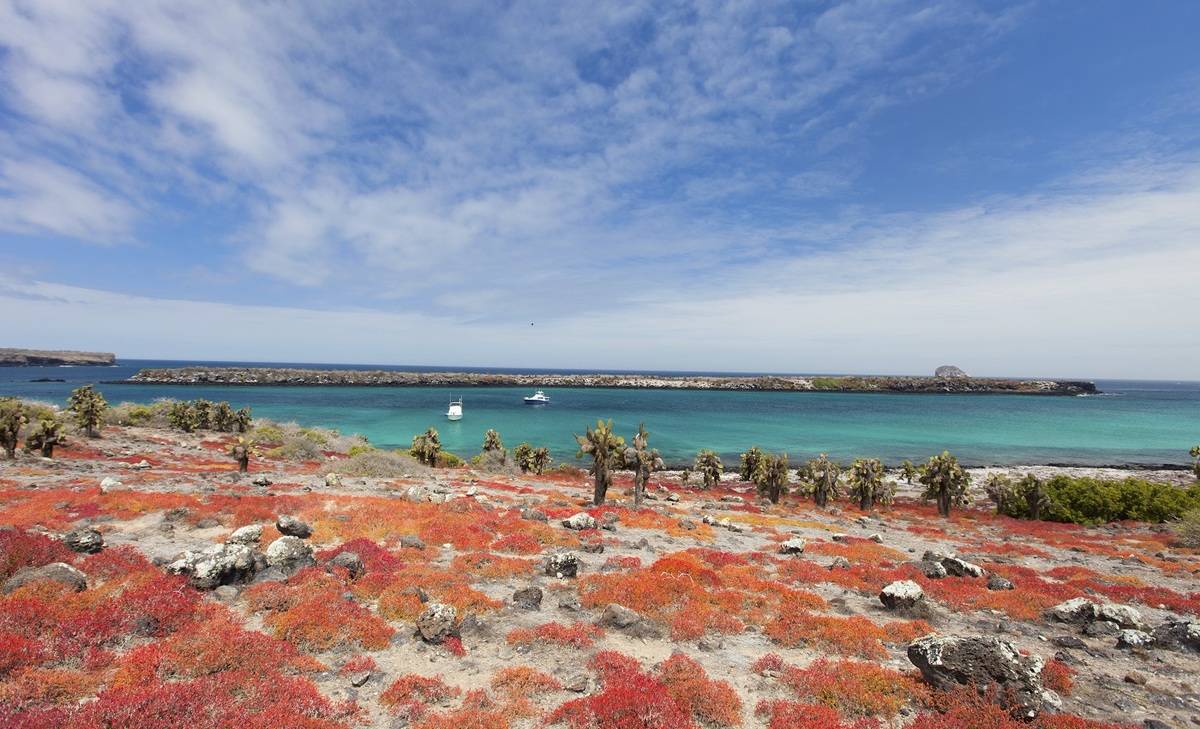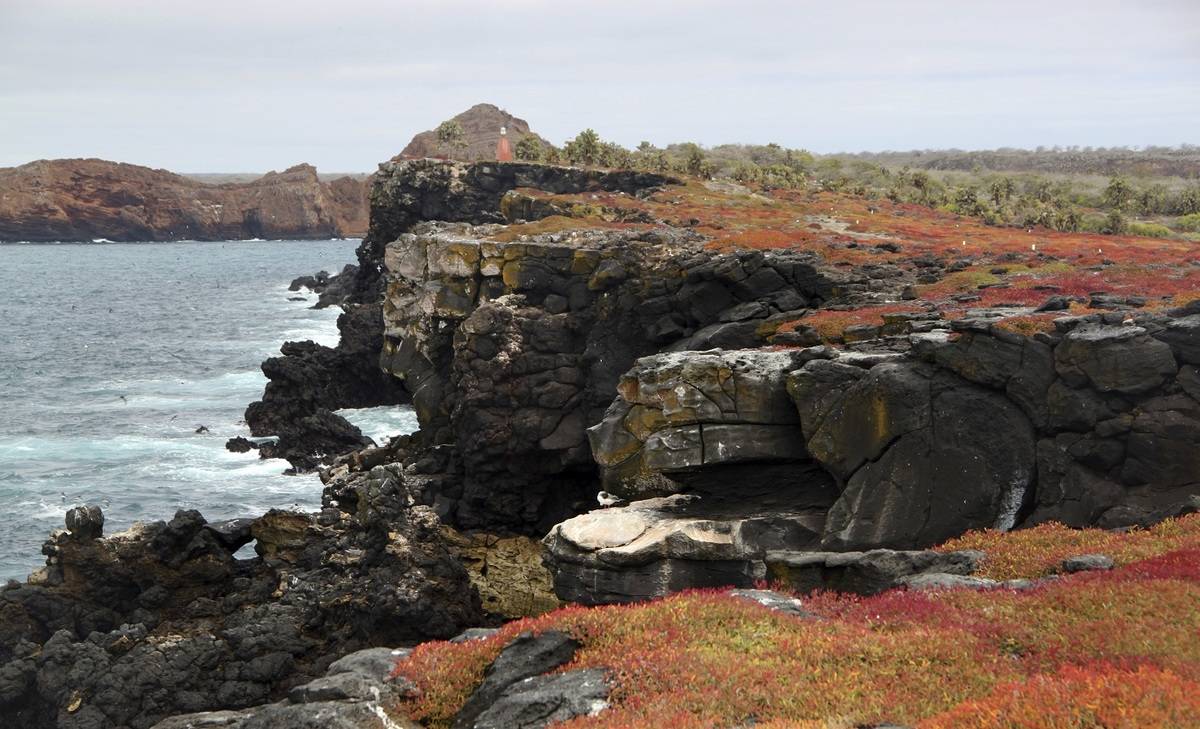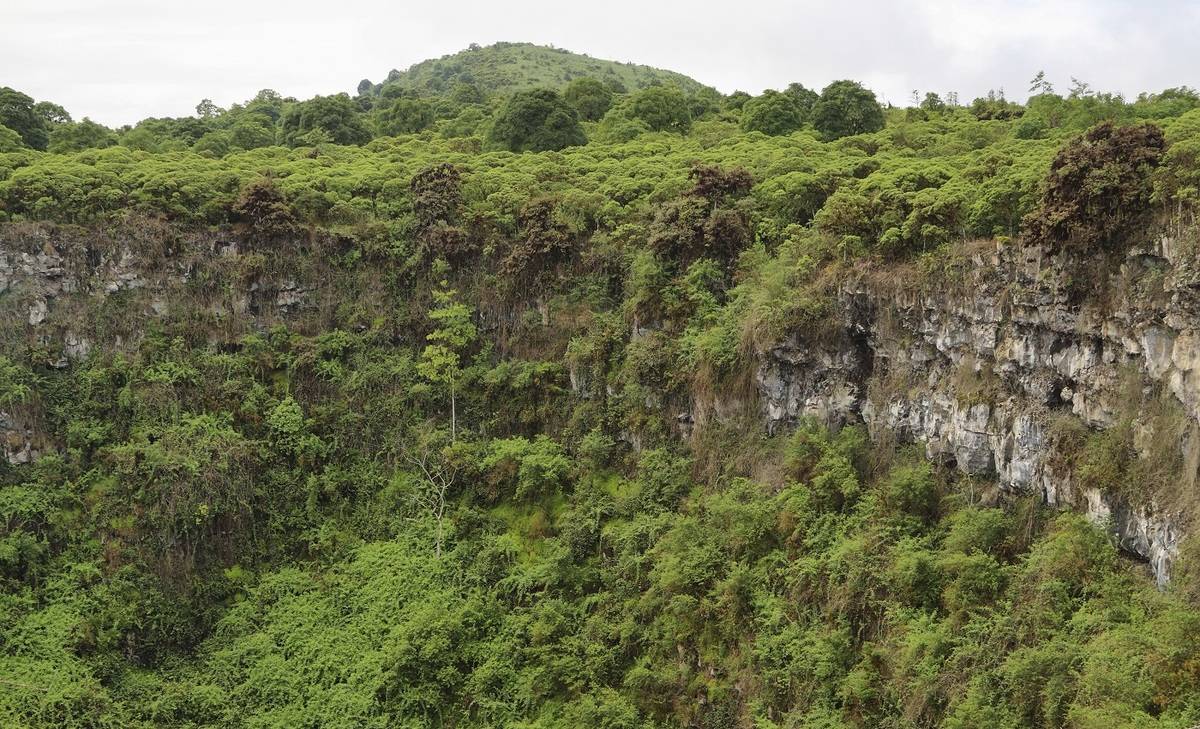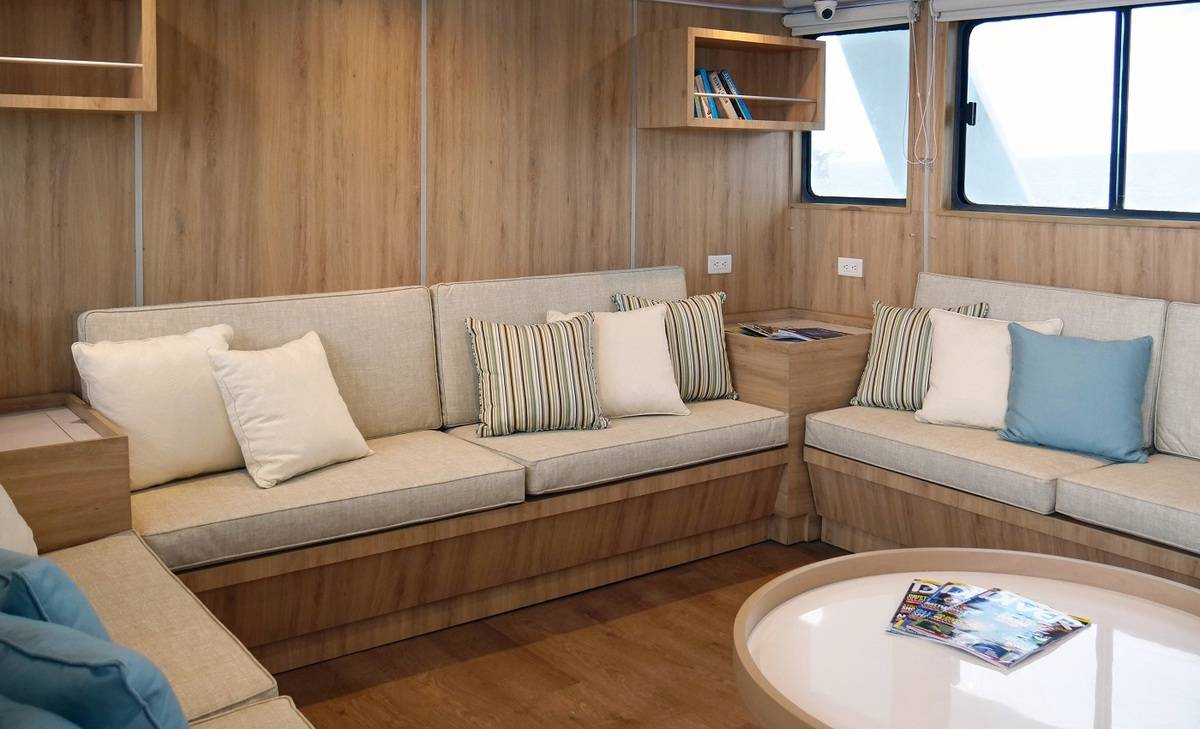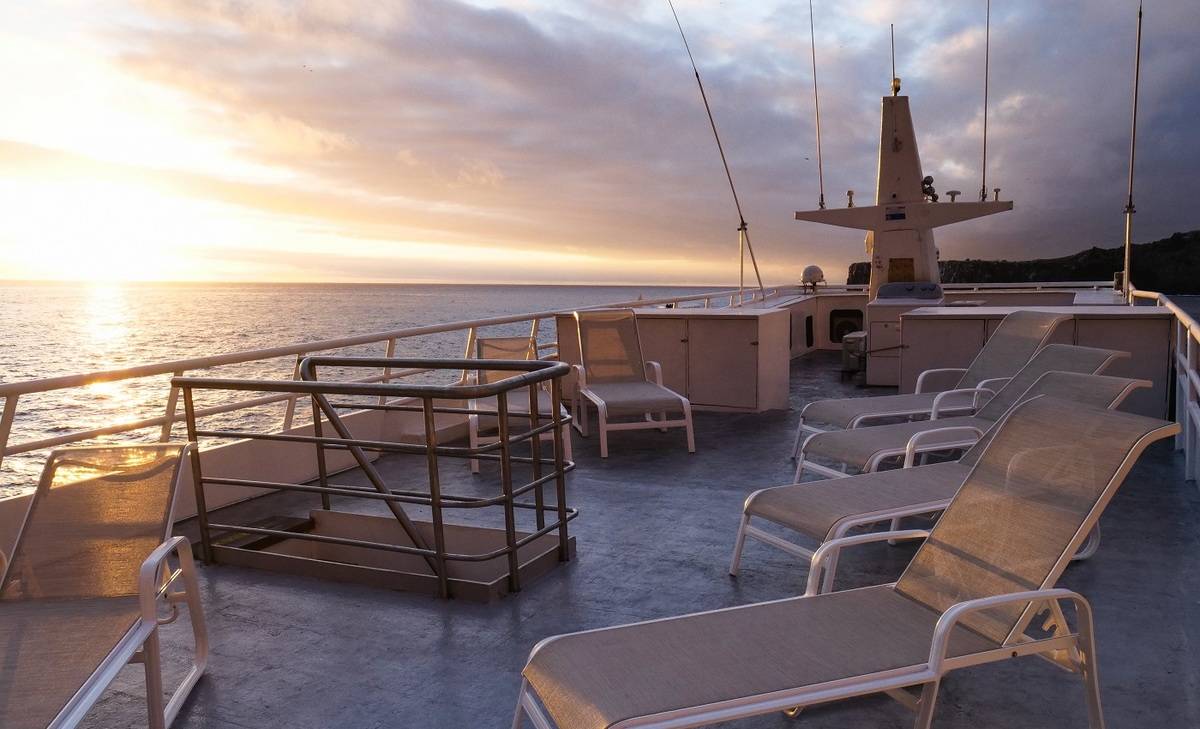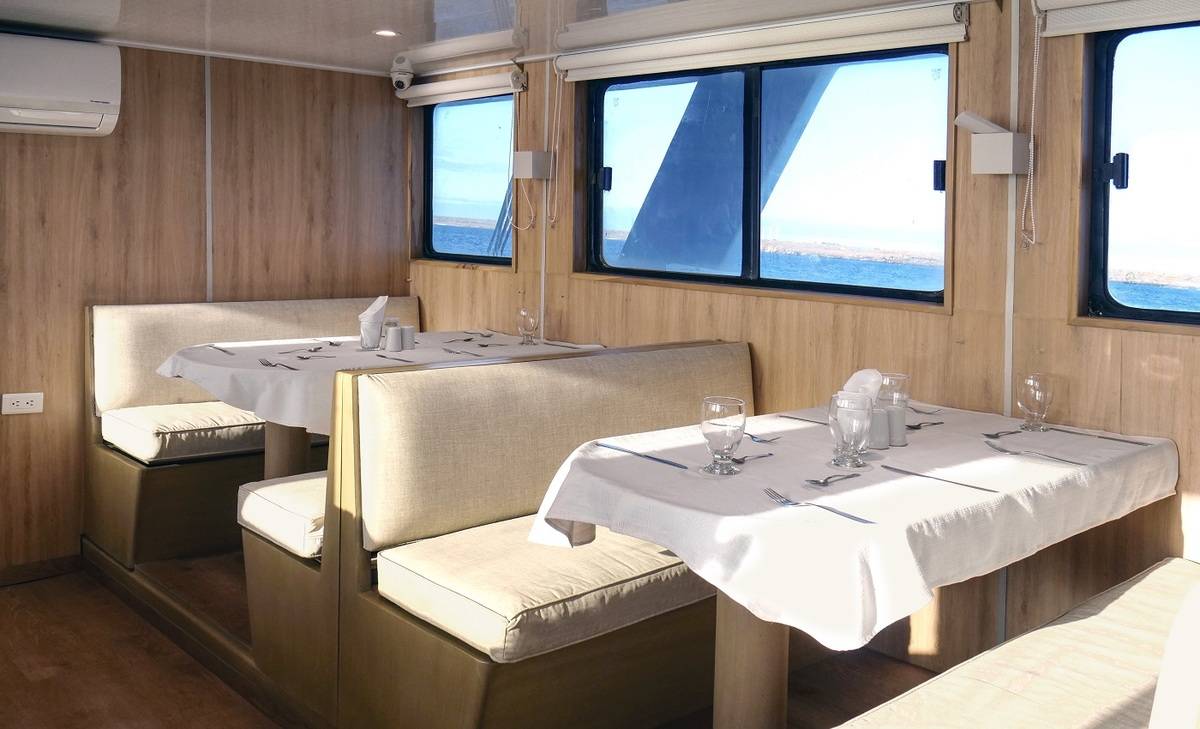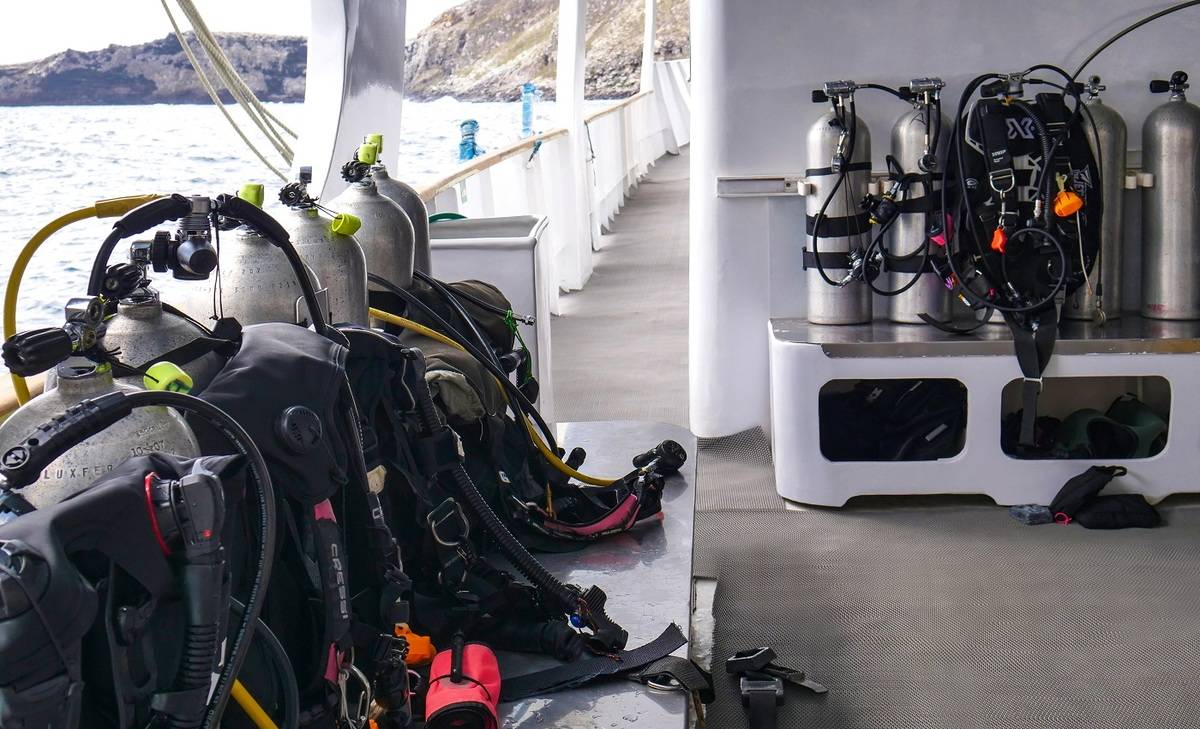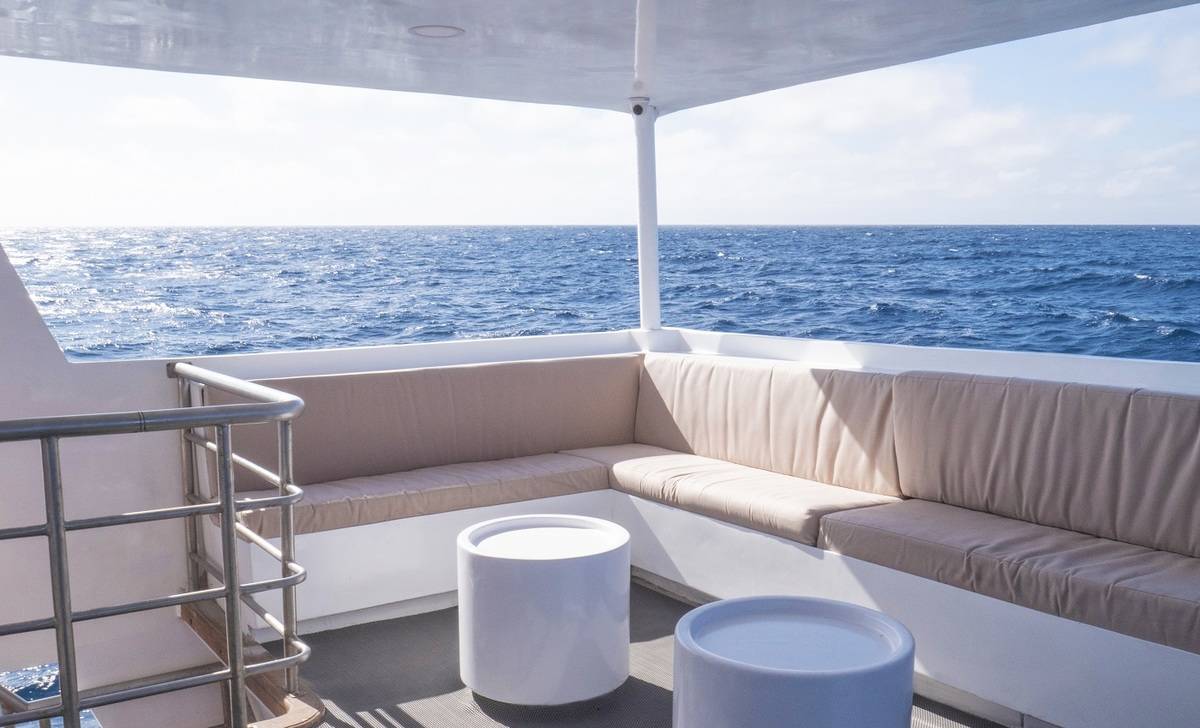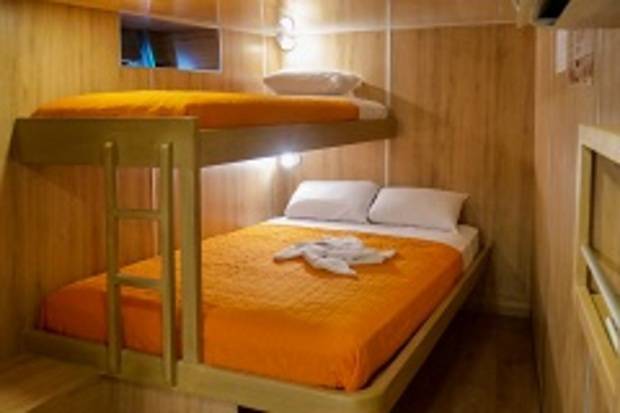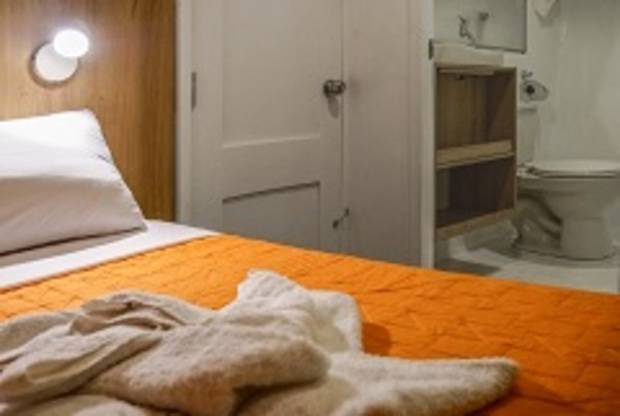Diving at Wolf and Darwin Islands
8 Days - M/Y Aqua
Discover the wonderful underwater world of the magical Galapagos Islands on this 8-day journey. Explore the more remote islands of Wolf and Darwin for close encounters with silky, hammerhead and white tip sharks as well as sun fish, barracudas and turtles.

Home » M/Y Aqua: Diving at Wolf and Darwin Islands
Itinerary Highlights:
- Dive among fascinating lava and rock formations on the North East of Baltra
- See seahorses, white tip reef sharks, reef fish (including large schools of hunting yellow tailed surgeonfish), barracudas, turtles, mobula rays, sting rays, scorpion stone-fish, and various invertebrates up close
- Swim among a range of shark species including hammerheads, black tips, silky and of course, Galapagos sharks
- Observe the famous giant tortoise at the Twin Craters in the highlands of Santa Cruz
Itinerary in Brief:
- Day 1: Baltra Airport - Baltra North East
- Day 2: Bartolome - Cousin's Rock
- Day 3: Wolf Island
- Day 4: Darwin Island
- Day 5: Wolf Island
- Day 6: Vicente Roca Point - Cape Douglas
- Day 7: Roca Blanca - Pinzon
- Day 8 - Highlands - Baltra Airport
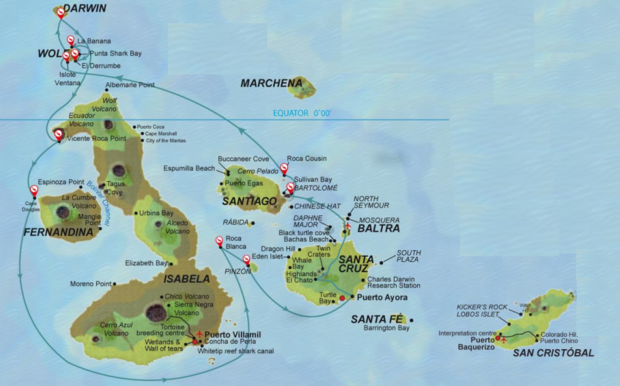
Day 1: Baltra Airport - Baltra North East
AM – Baltra Airport
Upon arrival at Seymour Ecological Airport, a check-up is carried out first, to ensure that no foreign plant or animal species are introduced on the islands. Furthermore, your TCC (Transit Control Card) is stamped; this must be kept safe during your trip, as it has to be presented again on your return flight. In addition, entrance to the Galapagos National Park is due for entry (US $ 100), if this has not yet been paid. Your guide will meet you at the airport, assist you with the luggage and accompany you on the short bus ride to the Baltra dock. Here you will climb aboard the yacht Aqua. After greeting the crew and the captain, your cabins will be assigned to you and then you will enjoy your first lunch onboard.
PM – Baltra North East
This is the perfect spot to start your adventure with moderate currents. This dive site is for adventurous divers looking to see fascinating lava and rock formations, as well as an incredible number of marine species. At the depth of around 20 m (60 feet), we might see white-tip reef sharks, pelagic fish, reef fish, rays, and turtles. Additionally, sea lions will be your companions upon entry and on the safety stops. Occasionally, hammerhead sharks can be spotted swimming nearby.
Day 2: Bartolome - Cousin's Rock
AM – Bartolome
Located east of Santiago Island, this small island is known for its unique spear-like pinnacle. Beneath the waves we dive over, we will go around a rocky platform and float around underwater cliffs that start at 15m and disappear into the sea bed, giving us a good chance to see pelagic animals.
You can expect to see some of the following marine life: seahorses, white tip reef sharks, reef fish (including large schools of hunting yellow tailed surgeonfish), barracudas, turtles, mobula rays, sting rays, scorpion stone-fish, and various invertebrates.
PM – Cousin's Rock
Cousin’s rock is located north-east of Santiago island, near Bartolome. This site has a unique and stunning topography of jagged rocky shelves where animals, both big and small, can be found resting and feeding. It is one of the few places where you can see endemic black coral amongst the riot of colourful clams, algae, flora and fauna that cover the rocks like splashes of paint. During our surface interval, look out for penguins that inhabit the surrounding area.
You can expect to see some of the following Marine Life: sea lions, Galapagos sharks, white tip reef sharks, turtles, seahorses, barracudas, stingrays, eagle rays, manta rays and reef fish (including large schools of floating bullseye pufferfish).
Day 3: Wolf Island
AM/PM – Wolf Island
Named after the German geologist Theodor Wolf, this extinct volcano reaches 253m (780ft) above sea level and lies around 160km (100m) northwest of Isabela Island. Land visits are not permitted, however, bird life such as red-footed boobies and vampire finches may be spotted from the boat.
For our dives, we choose from a selection of reefs and walls, most have medium to strong currents, where the use of gloves and reef hooks is advised. Schooling pelagics are the main attraction, but you can also see hammerheads, white tips and Galapagos sharks in the sites (May-November).
Day 4: Darwin Island
AM/PM – Darwin Island
A volcano that reaches 165m (490ft) above sea level was named in honour of naturalist Charles Darwin. It is among the smallest island within the Galapagos Archipelago and like Wolf Island, no land visits are permitted.
One of the most famed diving sites is “Darwin’s Arch”, which provides an amazing drift dive along the wall at an average depth of just 9m. Medium to strong currents are to be expected, but you bring with them many hammerheads, black tips, silky and Galapagos sharks! Schools of jacks are a common sight, along with turtles, angelfish and moray eels. Occasional sightings of tiger sharks, manta rays and bottlenose dolphins make for a thrilling time. Whale sharks may also be seen between May – November.
Day 5: Wolf Island
AM/PM – Wolf Island
Named after the German geologist Theodor Wolf, this extinct volcano reaches 253m (780ft) above sea level and lies around 160km (100m) northwest of Isabela Island. Land visits are not permitted, however, bird life such as red-footed boobies and vampire finches may be spotted from the boat.
For our dives, we choose from a selection of reefs and walls, most have medium to strong currents, where the use of gloves and reef hooks is advised. Schooling pelagics are the main attraction, but you can also see hammerheads, white tips and Galapagos sharks in the sites (May-November).
Day 6: Vicente Roca Point - Cape Douglas
AM – Vicente Roca Point
We will cross the Bolivar Channel for the last time to Vicente Roca Point, just at the mouth of Isabela’s seahorse-shape. While entering a dark cave below a spectacular arch, roaring echoes of the waves will accompany you. Just around the corner, the collapsed amphitheatre of Volcan Ecuador offers another impressive view. The calmer waters of the coves are well-protected against the ocean swell and are a great place for snorkelling amongst various species of shark, penguins, puffer fish and even seahorses!
PM – Cape Douglas
Cape Douglas is sure to provide you with amazing opportunities to observe a large amount of marine life, above and under the water! As you prepare for your dive, you can see Galapagos Penguins, Galapagos Flightless Cormorants, and Galapagos Marine Iguanas- animals only found exclusively on the Islands. A sure sight is incredible marine iguanas swimming and feeding on the rocks under the surface. Some marine life you may see are Red-lipped Batfish, Horn Sharks, Mola Mola, and possibly Baleen Whales!
Day 7: Roca Blanca - Pinzon
AM – Roca Blanca
For divers, Roca Blanca is a mecca for sea life. Located on the South East coast of Isabela Island, it’s one of the best diving sites the central islands offer. Due to the cooler and waters in the central islands, this increases the diversity of marine life. You will get to see an amazing life here, such as shark, manta & eagle rays, sea lions, moray eels, lobsters, and a vast population of tropical fish.
PM – Pinzon
It is a small island located off the western coast of Santa Cruz, about 1 hour from Puerto Ayora. It is a great spot for beginners and experienced divers, offering many playful sea lions, turtles, and red-lipped batfish. The deep drop off wall is for more experienced divers and is a great spot to see sea horses, rays, different species of sharks, and lobster. In the warmer months, Pinzon is a favourite site for the Manta Rays and pods of dolphins.
Day 8 - Highlands - Baltra Airport
AM – Highlands
The road to the highlands leaves from Bellavista, a small village located a 15-minute drive from Puerto Ayora, and passes through the agricultural zone, near the National Park boundary, the Miconia Zone, and then goes to the Fern and Sedge zone. With clear weather, this area boasts beautiful scenes of rolling hills and extinct volcanic cones covered with grass and lush greenery all year round. Here you will visit the Twin Craters, which are two pit craters, as well as a local ranch where we can observe the giant tortoise of Santa Cruz Island in its natural habitat.
PM – Baltra Aiport
It’s time to say goodbye to Galapagos! It’s been a pleasure accompanying you on this unique trip and hopes to see you again very soon!Assisted by the naturalist guide and some crew members, the dinghy will bring you and your luggage to the Seymour Ecological Airport, where we will take the shuttle back to the airport.
In case you have booked your trip for a longer stay with us, we would be welcoming any potential new fellow passengers to the yacht, and continue our trip to the next visiting site!
Cabin Details
Lower Deck Triple Cabin
Lower double bed and a single upper bed, portholes, private bathroom with hot shower, toilet and washbasin, biodegradable soap, shampoo and conditioner, air-conditioning, closet and towels.
Main Deck Double Cabin
Lower double bed, picture window, private bathroom with hot shower, toilet and washbasin, biodegradable soap, shampoo and conditioner, air-conditioning, closet and towels.
Upper Deck Twin Cabin
Upper and lower bunk beds, picture window, private bathroom with hot shower, toilet and washbasin, biodegradable soap, shampoo and conditioner, air-conditioning, closet and towels.
M/Y Aqua Deckplan
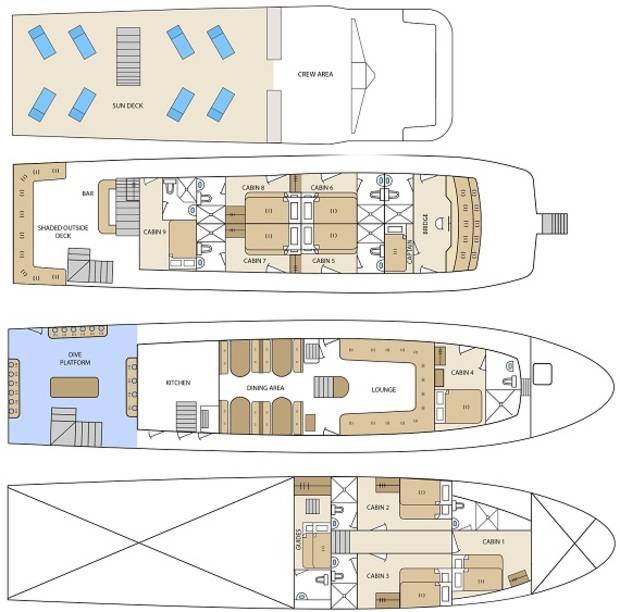
Specifications
- Type: Motor Yacht
- Year Built: 1998 (remodelled in 2019)
- Category: Mid-range
- Length: 26 metres / 85 feet
- Beam: 5.5 metres / 18 feet
- Max. Capacity: 16 passengers
- Cabins: 9 (During the 2019 refurbishment, 1 cabin will be added)
- Crew: 8 members + 1 instructor guide and 1 divemaster guide (for naturalist cruises only 1 bilingual naturalist guide)
- Zodiacs: 2 Caribe (C-20 & C-17) with 50 HP Yamaha four stroke outboards
- Max speed: 9 knots
- Electricity: 110V/220V
- Engines: 2 x 250HP Caterpillar
- Generators: 1x 80 kW & 1x 60 kW Cummins
Please note the M/Y Aqua does not accept credit cards on board, ensure you have adequate cash for drinks and optional extras.
Whats included?
- Accommodation on board*
- All meals, water, tea & coffee
- All excursions as described in the programme (subject to change) with bilingual guide (Spanish / English)
- Airport assistance at Quito airport (when flight and cruise are booked together)
- All transfers to Galapagos (AirportYacht-Airport only included when booked together)
- Snorkelling equipment
- Bath and beach towels
* Single travellers share a cabin with a person of the same sex unless a single room is booked and the single room surcharge is paid (guaranteed single cabin). Individuals who are willing to share their cabin are exempt from the single room supplement, even if no fellow traveller is added.
What’s not included?
- International and National (Ecuador-Galapagos-Ecuador) flights
- Galapagos National Park Entrance, US $ 100 (To be paid upon arrival, in cash)
- Transit Control Card, US $ 20 (To be paid upon departure from the mainland to Galapagos, in cash)
- Galapagos Airport Transport, if the flight has not been booked together
- If necessary, single room supplement
- Optional wetsuit (to be paid in cash only)
- Soft drinks and alcoholic drinks (to be paid in cash only)
- Personal expenses, extras & gratuities
- Travel insurance

